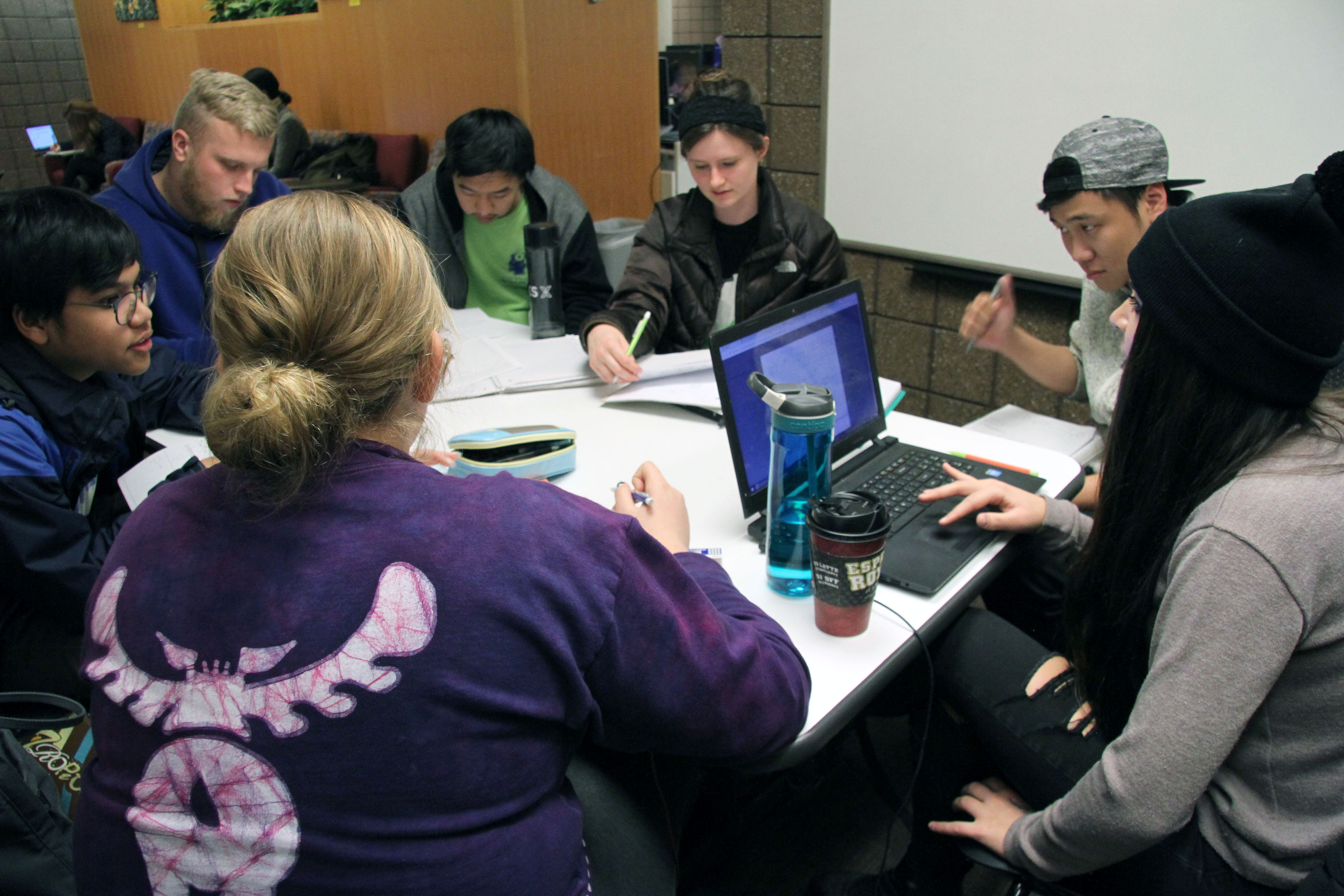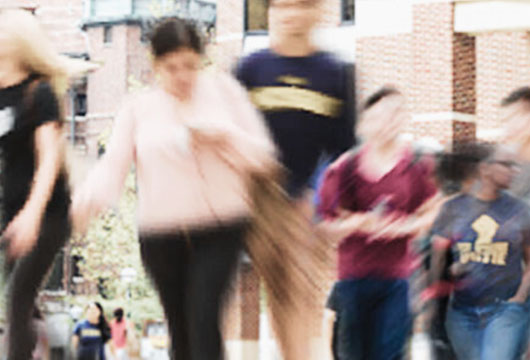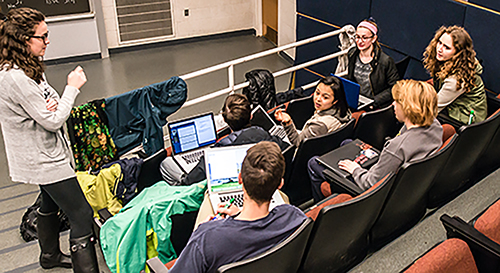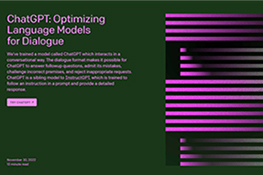 With the construction of dedicated active learning spaces across U-M’s campus, widespread professional development focused on active learning, and many instructors looking to increase student engagement, students are experiencing active learning more and more in their time at the University of Michigan. But how do students perceive this kind of instructional approach? Studies have indicated that the majority of students respond positively to active learning, and although resistance occurs, it occurs at relatively low levels (Finelli et al, 2018). However, a new study points to a potential aspect of students' experiences of learning in such classrooms that instructors may want to address (Deslauriers et al, 2019). In short, while students in active learning classrooms learn more, they may feel that they have learned less.
With the construction of dedicated active learning spaces across U-M’s campus, widespread professional development focused on active learning, and many instructors looking to increase student engagement, students are experiencing active learning more and more in their time at the University of Michigan. But how do students perceive this kind of instructional approach? Studies have indicated that the majority of students respond positively to active learning, and although resistance occurs, it occurs at relatively low levels (Finelli et al, 2018). However, a new study points to a potential aspect of students' experiences of learning in such classrooms that instructors may want to address (Deslauriers et al, 2019). In short, while students in active learning classrooms learn more, they may feel that they have learned less.
The authors looked at students’ outcomes and their perceptions of learning in a large-enrollment introductory physics course (Deslauriers et al, 2019). While this study was performed in a STEM classroom, the researchers highlight ways in which these principles might also be extended into non-STEM active learning classrooms. Students in the course were divided into two random groups: one which would experience “active instruction (following best practices in the discipline)” while the second group received “passive instruction (lectures by experienced and highly rated instructors).” These groups then switched the type of learning they did in a subsequent unit, to allow for comparison. Students participating in the active learning sections earned higher grades, suggesting they learned more. But in self-reported surveys, those students perceived that they had learned less compared to the lecture-based sections.
The authors of the study note that there are two explanations supported by prior studies for the difference between students’ measured learning and their perception of learning: “1) the cognitive fluency of lectures can mislead students into thinking that they are learning more than they actually are, and 2) novices in a subject have poor metacognition and thus are ill-equipped to judge how much they have learned.” Based on student interviews and surveys, they found evidence reaffirming these two ideas; in addition, they found evidence prompting them to propose a third explanation: “students who are unfamiliar with intense active learning in the college classroom may not appreciate that the increased cognitive struggle accompanying active learning is actually a sign that the learning is effective.”
Student concerns about the effectiveness of active learning can negatively impact their motivation, engagement, and attitudes toward group work; failure to see how much they are learning can even limit their ability for effective self-regulation. The authors note that "If students are misled by their inherent response into thinking that they are not learning, they will not be able to self-regulate, and they will not learn as successfully." It can also lead to negative evaluations of instructors in a course. Drawing on prior work (Tharayil, et al., 2018), the authors propose some practices focused on helping students understand the value of increased cognitive effort to help make sure active learning is as productive and well-received as possible:
- Early in the course, explicitly highlight the benefits of the extra work required for the activities you’ve planned during lecture time. In particular, reference research based explanations (such as those quoted above) of the relationship between active participation and increased learning. This kind of transparency is also an important part of inclusive teaching practices.
- Give an examination as early as possible so students can gauge their actual learning. This early feedback can be a key part of efforts to develop students’ metacognitive skills around studying throughout the term (McGuire, 2015).
- Utilize best practices for facilitating active learning, including providing clear instructions for setting up and concluding activities. Studies have found that active learning can sometimes lead to students feeling that a class is disjointed, adding to their perceptions of lack of “instructional fluency” (Tharayil et al, 2018). Reducing the lack of flow between activities allows students to focus their efforts on learning rather than on struggling to understand what is happening. This in turn can make them more likely to value the instructional method and be more motivated to engage in the activities.
- Encourage students to work hard during activities, normalizing challenge and reminding them of the value for learning of cognitive effort.
- Solicit frequent feedback from students and respond to their concerns. This can range from low stakes formative assessment or one minute papers to gauge what students have learned and what they do not understand (and to help them increase their ability to reflect on their own learning), to more affective feedback on processes or logistics (to help instructors better understand and improve the student’s experience in the course).
Learn more about Active Learning
Active learning has been widely studied and shown to improve learning. While active learning can take many forms, a commonly accepted definition is offered to us by Prince, drawn from foundational work done by Bonwell and Eison (Bonwell, 2000 and Eison, 2010):
“Active learning is generally defined as any instructional method that engages students in the learning process. In short, active learning requires students to do meaningful learning activities and think about what they are doing” (Prince, 2004).”
CRLT resources on Active Learning can be found here. CRLT consultants are also available to help you plan for active learning in your particular course settings.
Citations:
Deslauriers, L., McCarty, L. S., Miller, K., Callaghan, K., & Kestin, G. (2019). Measuring actual learning versus feeling of learning in response to being actively engaged in the classroom. Proceedings of the National Academy of Sciences, 116(39) 19251-19257
Finelli, C. J., Nguyen, K., Demonbrun, M., Borrego, M., Prince, M., Husman, J., ... Waters, C. K. (2018). Reducing student resistance to active learning: Strategies for instructors. Journal of College Science Teaching, 47(5), 80-91.
Freeman, S., Eddy, S. L., McDonough, M., Smith, M. K., Okoroafor, N., Jordt, H., & Wenderoth, M. P. (2014). Active learning increases student performance in science, engineering, and mathematics. Proceedings of the National Academy of Sciences, 111(23), 8410-8415.
McGuire, S., & Angelo, T. (2015). Teach students how to learn: Strategies you can incorporate into any course to improve student metacognition, study skills, and motivation. Sterling, VA: Stylus Publishing.
Prince, M. (2004). Does active learning work? A review of the research. Journal of Engineering Education, 93(3), 223-231.
Tharayil, S., Borrego, M., Prince, M., Nguyen, K.A., Shekhar, P., Finelli, C., Waters, C. (2018). Strategies to mitigate student resistance to active learning. International Journal of STEM Education 5, 7 doi:10.1186/s40594-018-0102-y
- Log in to post comments
- 563 views








